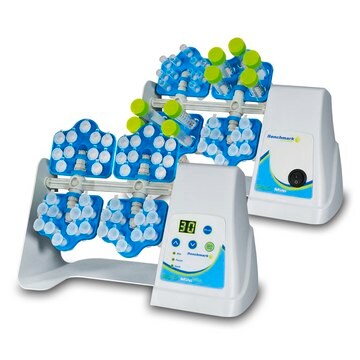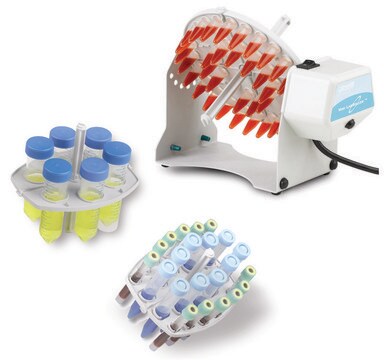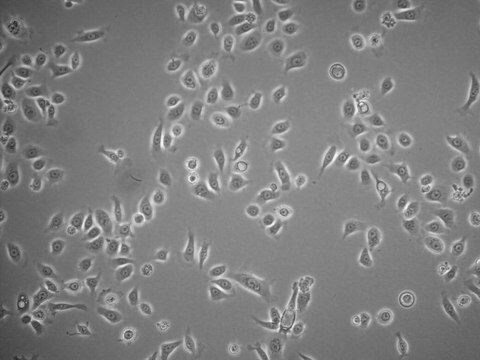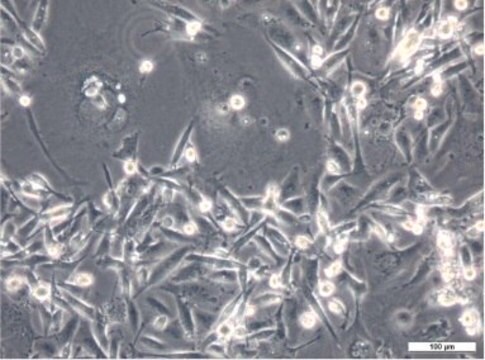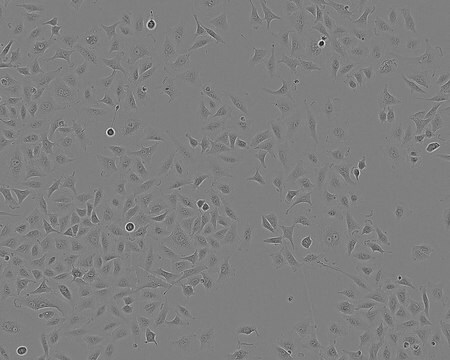BXPC3 Cell Line human
93120816, human pancreas, Epithelial
Synonym(s):
Biopsy Xenograft of Pancreatic Carcinoma Cell Line-3, BxPC-3 Cells
About This Item
Recommended Products
Product Name
BXPC3 Cell Line human, NOTE: Both the cell line and DNA from the cell line may be available for this product. Please choose -1VL or VIAL for cells, or -DNA-5UG for DNA, 93120816, human pancreas, Epithelial, 93120816
biological source
human pancreas
description
Human primary pancreatic adenocarcinoma
packaging
tube of 5 μg 93120816-DNA-5UG
pkg of vial of cells 93120816-1VL
growth mode
Adherent
karyotype
2n = 59, near triploid
morphology
Epithelial
products
Mucin
receptors
Not specified
technique(s)
cell culture | mammalian: suitable
relevant disease(s)
cancer
shipped in
dry ice
storage temp.
−196°C
Cell Line Origin
Cell Line Description
Application
DNA Profile
CSF1PO: 13
D13S317: 11
D16S539: 9,11
D5S818: 11
D7S820: 10,13
THO1: 9
TPOX: 8
vWA: 14,18
Culture Medium
Subculture Routine
Other Notes
Choose from one of the most recent versions:
Certificates of Analysis (COA)
It looks like we've run into a problem, but you can still download Certificates of Analysis from our Documents section.
If you need assistance, please contact Customer Support.
Already Own This Product?
Find documentation for the products that you have recently purchased in the Document Library.
Related Content
We offer more than twenty ECACC pancreatic cancer cell lines of human, rat, or mouse origin, including PANC-1. Choose cells based on mutations in KRAS, TP53, SMAD4, and other key genes, or by demonstrated suitability for applications such as toxicity, xenograft models, and drug response studies.
Our team of scientists has experience in all areas of research including Life Science, Material Science, Chemical Synthesis, Chromatography, Analytical and many others.
Contact Technical Service
